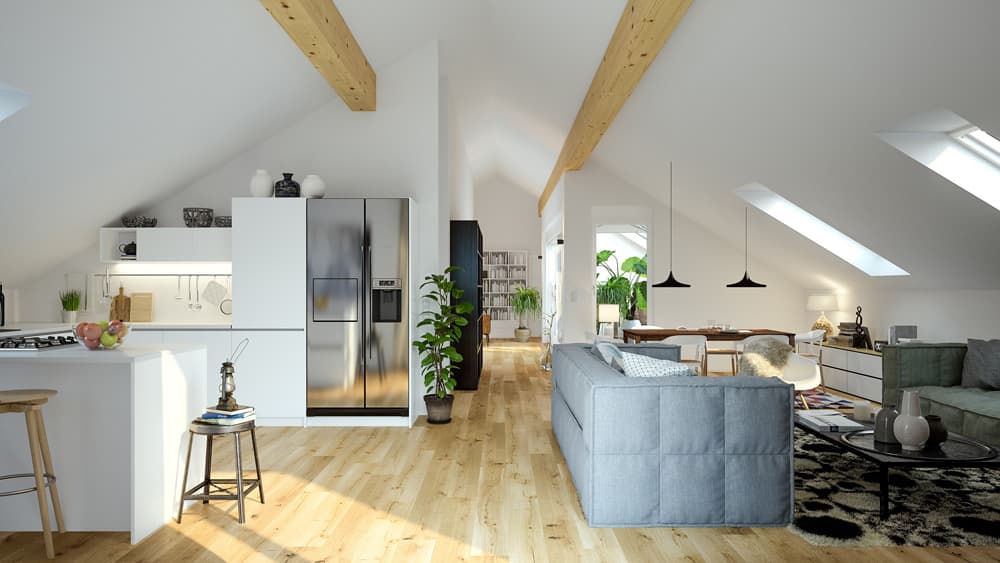COMPARE PRICES AND SERVICES TO RENOVATE ROOMS, FLOORS, WINDOWS, ETC.

GET 3 QUOTES FOR YOUR RENOVATION AND WORKS

"*" indicates required fields


Intergenerational Home Renovation Tips in Quebec

The pandemic, the sharp rise in real estate prices, inflation, and the global geopolitical situation has only accentuated the retreat towards safe values such as the family. More and more families are deciding to live together for security, savings, and convenience.
This type of living arrangement has given rise to intergenerational houses where several generations share the same home.
If you are interested in this type of house to be able to accommodate aging parents or married children, you need to check on the rules and regulations in your municipality. You may also want to know the legal aspects and any financial assistance available.
You can read on to get all the information you need. We also invite you to fill out our online form to receive free and no-commitment offers from our partners specializing in this type of housing.
What is an intergenerational house?

An intergenerational house is house with two households from the same family. It could be the grandparents, parents, and grandchildren where everyone has their individual space. The Quebec government website also refers to it as a multi-generational or bi-generational house which is a single residence that holds several generations from the same family to live together while keeping their individual privacy.
Sometimes these accommodations are inter-connected by a connecting door.
The advantages of this type of housing are numerous: mutual aid, closer family ties, the sharing of tasks, and expenses.
As of now, about 2.3% of properties sold in Quebec are intergenerational homes and single-family homes still dominate the market. The areas of Montreal, Quebec City, and Lanaudiere show the most significant increase in the sale of this type of property.
Questions to ask yourself before an intergenerational home project

Before considering living under the same roof with other members of your family, it is important to think about the different aspects that this type of cohabitation can generate:
- Who will be the owner and who will be the tenants?
- What will happen if one of the two households has to move?
- What will happen if one of the inhabitants of the house has a severe loss of autonomy or dies?
- How will tasks and expenses be shared?
- How will the life of the house be organized?
- What will be the provisions concerning nuisances (parties, music, noise, etc.)?
- How will the use of common rooms or equipment (garden, swimming pool, laundry room, etc.) be distributed?
These questions are critical to preserve family harmony and ensure a happy and mutually beneficial arrangement.
Municipal regulations regarding intergenerational homes
In Quebec, each municipality has its own standards regarding the regulation of intergenerational properties.
For example, in Longueuil, the second dwelling of this type of residence must not exceed 45% of the total area of the building, and may only occupy the ground floor. In the borough of Saint-Hubert (in Longueuil), multigenerational homes are not permitted.
In Greenfield Park, municipal regulations oblige owners to demolish the second dwelling when its occupant ceases to live there.
In some areas, the square footage for the parents cannot be more than 1/3 of the property’s total area. Some municipalities require a firewall or exterior wall to separate the unit. The list just goes on!
Good to know
If you own an intergenerational house, the second dwelling must be occupied by someone who is related or married to you. If the latter moves or dies, his accommodation can only be inhabited by people who are also related to you. If you are unable to find other members of your family to live in this dwelling, you will have to either sell your intergenerational home or demolish this dwelling.
How do taxes work for Intergenerational houses?
In Canada, most people know that the capital gain, that is to say, the profit made on the sale of a property, is not taxable. This provision is only valid for principal residences.
However, in some cases, and depending on the layout and criteria of the municipality in which it is located, the intergenerational home could be exempted – or partially exempt – from this tax benefit.
What is the average price of an intergenerational home?
In Quebec, the average price of an intergenerational home is $422,817, or about 15% more than a single-family home.
Financial assistance for intergenerational houses
Strictly speaking, there are no subsidies or tax credits for the construction of this type of housing.
However, there are several programs available for renovations. Some municipalities even grant additional financial assistance under the Rénovation Québec program for adding a dwelling to your principal residence.
Some forms of aid and tax credits are also available for people who accommodate elderly parents:
- The Canada Caregiver Credit is for a person who takes care of a dependent family member due to a physical or mental disability.
- The tax credit for home support for seniors.
- Reimbursement of taxes for an intergenerational house.
- A subsidy for the addition of a dwelling to your property or for its adaptation to the needs of people with a loss of autonomy.
Tax Credit | Terms and | Beneficiaries | Features | Provincial or |
For home accessibility |
|
|
|
|
From 2023 For renovation of an intergenerational house | 15% of the amount of expenses up to $50,000 (maximum credit of $7,500) | Person aged 65 or over or with a disability | Modification or renovation of the beneficiary’s home or that of the caregivers who accommodate him | Federal |
Tax credit for home support of seniors | 36% of eligible expenses. The annual limit of eligible expenses is $19,500 (maximum credit of $7,020) | Person aged 70 or over | Allows the reduction of the costs of certain home support services in their environment | Provincial |
Converting a single-family to an intergenerational house

Converting a residence to an intergenerational house can be a win-win strategy for many families.
It can significantly reduce living expenses and also create a stronger family support system.
Oftentimes, it will be a single-family home with 2 units (bi-generational) – a large principal unit and a secondary unit that is smaller in size. They have separate entry points with a connecting door inside. Although the home has two households, it is counted as one address and taxed as a single unit.
Modern-style intergenerational houses are designed for comfort and privacy so that everyone can have dignity and peace of mind.
If you have given a lot of thought to converting your existing home to an intergenerational house, the next step is to plan your project! How do you bring the family together under one roof? Below are some of your options.
- Build an addition to your home
- Design and build a new home
- Buy an existing intergenerational house
Renovating your existing property can be relatively cheaper than buying a new property. You should contact your City to ask about the regulations in your area. You can also start looking for the best contractor to help with your renovation.
Would you like to have an idea of how much it would cost to renovate your home? Fill out the short online form below to receive FREE and NO-OBLIGATION quotes from reputable contractors in your area.
Building a home addition to convert to an intergenerational home
Before you begin this type of renovation, you must be prepared for the cost of your addition and set your budget.
The reason a home addition could be cheaper than buying a new house is because you can make use of the walls, floors, and other structures in place. If you are turning your garage into a suite, or finishing your basement, the work will be less extensive.
Of course, you will need to have an architect for the floor plans so you can obtain a permit for your project.
To give you a good idea of the cost, below are average prices of home additions:
Type of addition | Average Cost (CAD) |
Floor addition (turnkey) | Starts at $235 to $285/sq. ft. |
Addition on piles | Starts at $220 to $280/sq. ft. |
Addition on foundation/slab (turnkey) | Starts at 260 to $330/sq. ft. |
To enable you to compare, know that for a new construction (single-storey), the average price starts at $240 to $275 per sq. ft.
Can you buy an intergenerational house?
If renovating an existing home is not possible due to lack of space or other reasons, the next option is to buy an intergenerational property.
However, although the level of interest in intergenerational houses has gone up in the last few years, there isn’t a strong supply in the market.
Thus, finding a suitable intergenerational property within your budget and in your desired area can be challenging. As we said earlier, some municipalities do not allow this type of construction.
You may want to consult a reputable real estate broker to assist you and make sure you buy an intergenerational house that was legally constructed.
Build or renovate a mutigenerational home with reputable contractors

Your best bet to successfully build a multigenerational house is to work with an experienced and reputable contractor!
Not only can he advise you of the viability of this plan (based on local regulations and building code), but he can also help you with your design and budget.
Our partner contractors have been screened thoroughly for their reputation, qualifications, customer support, and track record.
Regardless of the size of your project or budget, our partners will be happy to offer you competitive prices and solutions tailored to your needs!
Just fill out the short online form to connect with the best local contractors for your renovation!
Comments are closed.
COMPARE PRICES AND SERVICES TO RENOVATE ROOMS, FLOORS, WINDOWS, ETC.

GET 3 QUOTES FOR YOUR RENOVATION AND WORKS

"*" indicates required fields


Copyright© 2026 Compare Home Quotes.
Oolong Media






